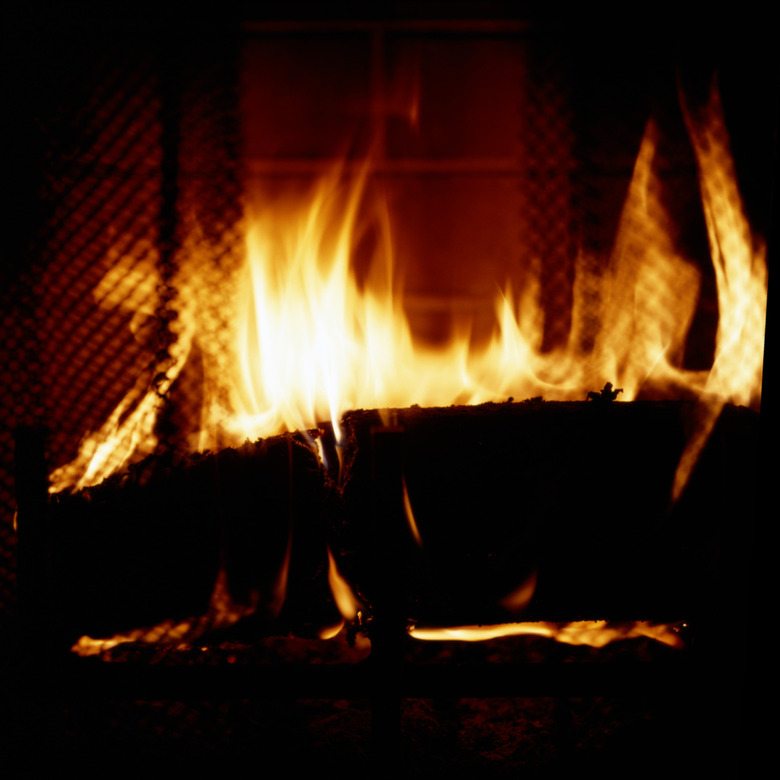What Are The Causes Of CO2 In A Home?
Carbon dioxide, or CO2, is a colorless, odorless gas that is naturally abundant within the atmosphere. Outside, carbon dioxide accounts for just 0.033 percent of Earth's atmospheric gases, but within the home, this level can increase. At low levels, carbon dioxide is harmless to humans, but elevated values can lead to a range of health problems, including headaches, fatigue and breathing difficulties. There are several causes of elevated carbon dioxide levels in homes.
TL;DR (Too Long; Didn't Read)
Carbon dioxide, or CO2, is a harmless gas in the atmosphere, but if it increases in levels inside a home, it can cause health problems to the inhabitants. People and animals exhale CO2 as a natural function of respiration, so if a home is overcrowded and has insufficient air exchange with the outdoors, CO2 levels can increase. Soil capping is a process that can happen to houses built on old farm sites, where damp weather causes the soil to expand and releases gases, including natural amounts of CO2 into the home. Malfunctioning air conditioning systems can also lead to elevated CO2 levels. The combustion of fossil fuels in the home is another source of increased CO2.
Overcrowded Homes
Overcrowded Homes
Outdoors, carbon dioxide levels are typically found to be 250 to 350 parts per million. Typical occupied spaces with good air exchange have carbon dioxide levels between 350 and 1,000 parts per million. Since humans exhale carbon dioxide as part of respiration, overcrowded houses may lead to elevated carbon dioxide levels. Studies have explicitly demonstrated that carbon dioxide associated with overcrowding can lead to significant effects upon health. For example, Kovensi and co-workers at the Children's Hospital of Eastern Ontario found that elevated carbon dioxide levels — an average value of 1,358 parts per million — was associated with an increased occurrence of respiratory infections.
Soil Capping
Soil Capping
Carbon dioxide occurs naturally in soil as a result of decomposing organic matter. Houses built in the countryside, and particularly on previous farm sites, may be particularly susceptible to elevated carbon dioxide in the soil due to the previous use of fertilizers. This carbon dioxide can be sucked into the house due to the air pressure difference between the soil and the home. An example was highlighted by CO2Meter.com. The site quotes a case where a customer complained that every time it rained, the pilot light in the home furnace went out, and the customer became very ill. A phenomenon called "soil capping" was causing soil to to swell and become waterlogged, leaving no space for soil gases to escape outside. This left the basement, where the furnace was creating negative pressure by pulling air from the basement to the rest of the house as the escape route for the CO2. The pilot went out because excessive CO2 smothered the flame.
Air Conditioning Systems
Air Conditioning Systems
Many homeowners use air-conditioning systems to regulate and circulate fresh, cool air. The Wisconsin Department of Health identifies carbon dioxide levels as a a good measure of air conditioning functionality. In an air-conditioned room within the home, carbon dioxide levels above 1,000 parts per million may indicate a problem with the system. If the carbon dioxide levels are elevated, the air conditioning system might need repair or replacement to function optimally and to prevent harm or danger to people in the home.
Fossil Fuel Combustion
Fossil Fuel Combustion
Fossil fuel combustion of wood, coal, oil, charcoal and gas lead to the production of carbon dioxide. For each kilogram of coal burnt on a fire, 2.86 kilograms of carbon dioxide will be created. Since the density of carbon dioxide is 1.8 kilograms per cubic meter, this is equivalent to 1.6 cubic meters of carbon dioxide being released at room temperature. It is therefore important to keep areas where combustion takes place well ventilated. If a house has an open fire, ensure that the chimney is cleaned and inspected regularly to reduce the risk of blockages. Keep windows open in kitchens where gas stoves are used, and make sure any tobacco smokers indulge outside or near to a window.
References
Cite This Article
MLA
Markings, Samuel. "What Are The Causes Of CO2 In A Home?" sciencing.com, https://www.sciencing.com/causes-co2-home-23937/. 16 April 2018.
APA
Markings, Samuel. (2018, April 16). What Are The Causes Of CO2 In A Home?. sciencing.com. Retrieved from https://www.sciencing.com/causes-co2-home-23937/
Chicago
Markings, Samuel. What Are The Causes Of CO2 In A Home? last modified March 24, 2022. https://www.sciencing.com/causes-co2-home-23937/
